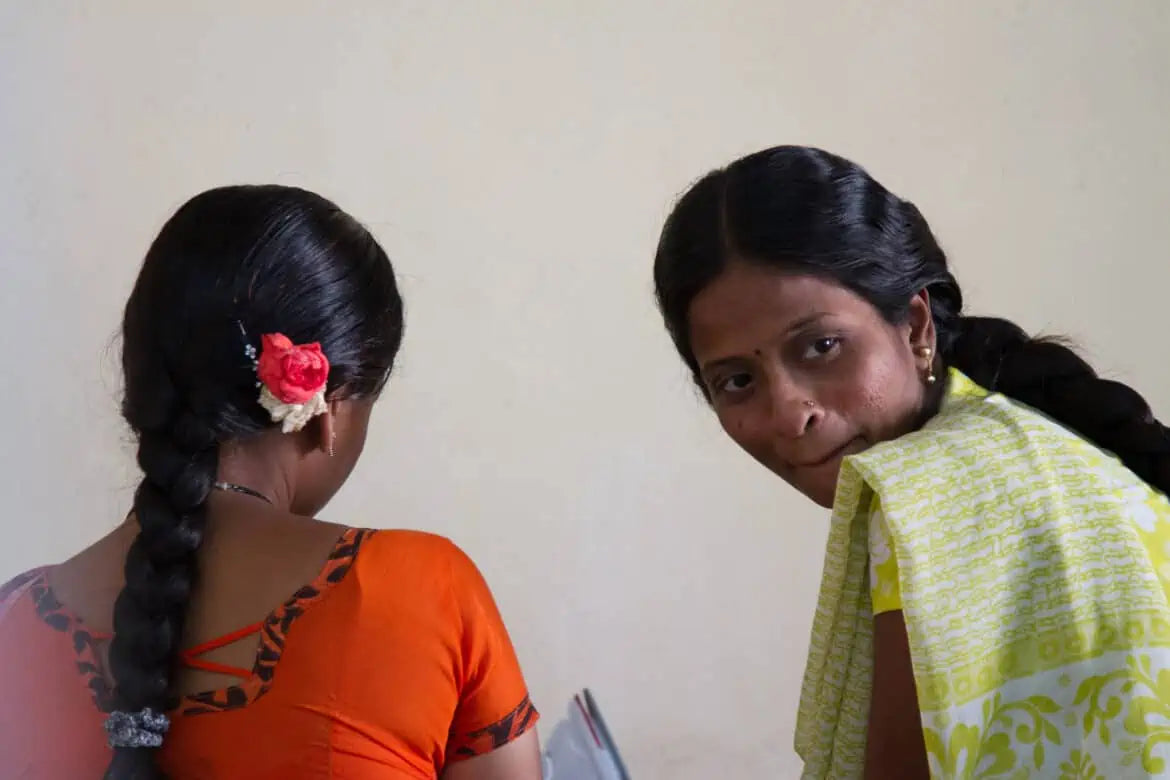what can made in india do?
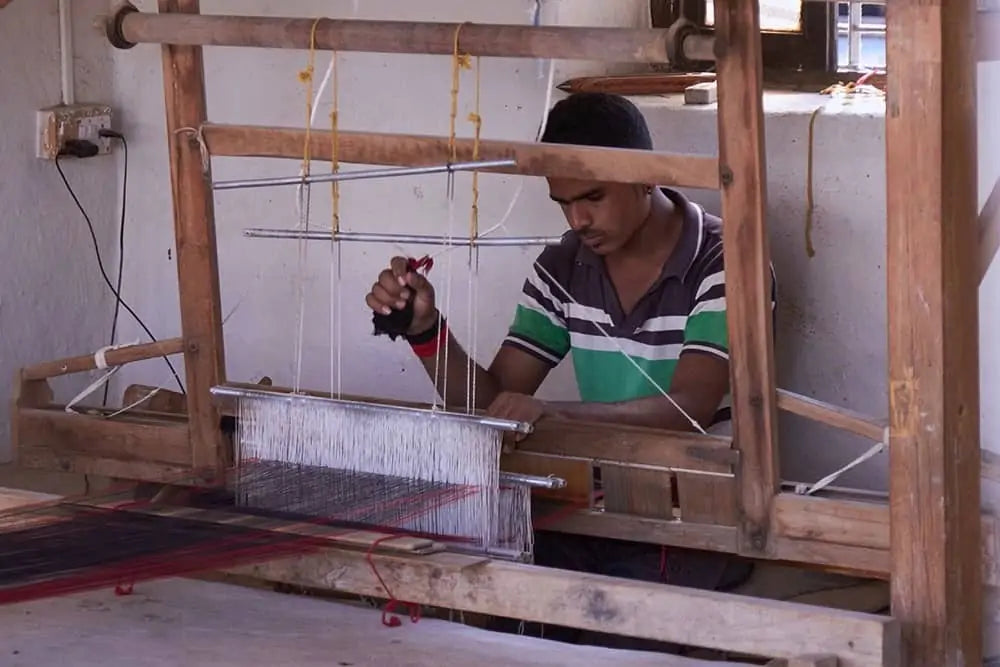
We don't really pay attention to it, and if we do, it's only to cut it off because it's annoying. This little sewn-in piece of paper that says "made in India" [or alternatively: Bangladesh, Myanmar, Cambodia, Vietnam]. But what does that actually mean? What does it mean that this dress, this shirt, this coat was made in India?
“Made in India” is often seen as a synonym for poor quality, miserable working conditions and exploitation. There is no question: this is exactly what is in the millions of items of clothing made in India. But despite all the negative headlines, it is worth asking: What can “made in India” really do? Small spoiler: quite a lot!
Spinning yarn and weaving fabric for independence
Spinning and weaving played a crucial role in the history of India and especially in the country's independence movement. Mahatma Gandhi called on Indians to passively resist the colonial power of the British and encouraged them to stop wearing western clothing and to make, spin and weave their own clothes. At that time, spinning cotton into yarn was also an important part of his personal religious meditation, which he practiced daily - even during times of great political crises. The result of the peaceful resistance under Gandhi was India's independence in 1947, and spinning was given so much importance in this development that the spinning wheel has been featured on the Indian flag ever since. Both spinning and weaving are still widespread in India today, and in many family businesses, beautiful fabrics are created in almost meditative work on large looms, which are also used to sew our products.
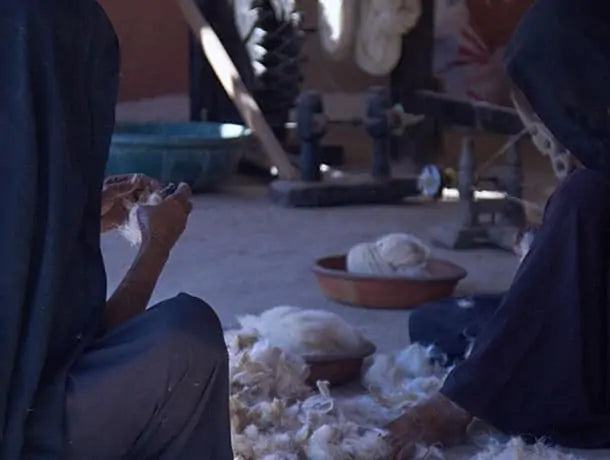
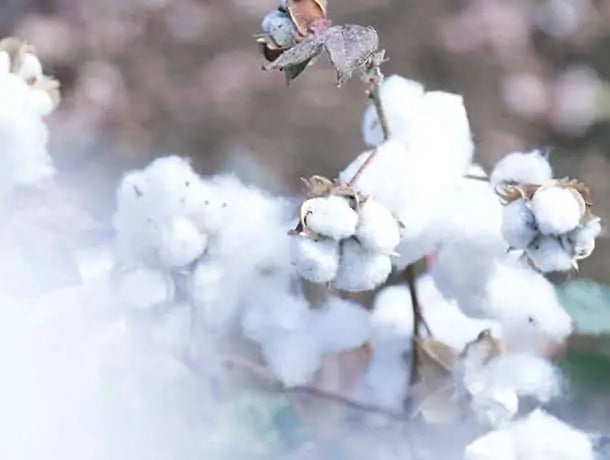
Why woven fabrics
To make fabric from yarn, it can be not only woven but also knitted. The result is elastic materials such as jersey, the fabric that T-shirts are usually made of. The big difference between knitted and woven fabrics is that knitted fabrics can only be produced using relatively expensive machines. This is why they are only offered by larger companies. There is also a huge industry for this type of fabric production in India, especially in the south of the country.
These companies have very high minimum order quantities, which we as a small company do not need. But not only for this reason, but above all because of the appreciation for the complex handwork and our personal relationships with the weavers, we have decided to work exclusively with woven fabrics.
Blockprint – the filigree stamp art
If you walk through the residential areas of Bagru, a small suburb of Jaipur in northern India, you will see huge patterned fabrics hanging on almost every flat roof, drying in the sun. Many Chhippa (printer) families live here, and it is said that they have always been responsible for dyeing and printing fabrics. In fact, almost all of the residents of this place have the same occupation, and the large rooms inside the houses are filled with long tables and even longer fabrics. Using complex dyeing techniques, carved wooden stamps (block prints) and a lot of family cooperation, these are then turned into the colorful fabrics that decorate the roofs higher up. The most impressive thing is the precision with which the printers work. Using stamps the size of a finger or wooden plates the size of a plate, 50-meter-long fabrics are printed without gaps, and even if you try hard, you can no longer see the borders where the stamp was placed. Further into the city center you will find the artists who are responsible for carving the block prints. They are mostly Muslim men who design the small patterns and floral tendrils and chisel them into the wooden blocks using special tools.
The Chhippa mostly use natural dyes for dyeing and printing. This means that raw materials such as pomegranate, turmeric, saffron or indigo are processed into a wide variety of colors. The Sunrise Printers property conveys a closeness to nature and tradition. No chemicals, no stench, no pollution - as is typical for many dyeing companies.
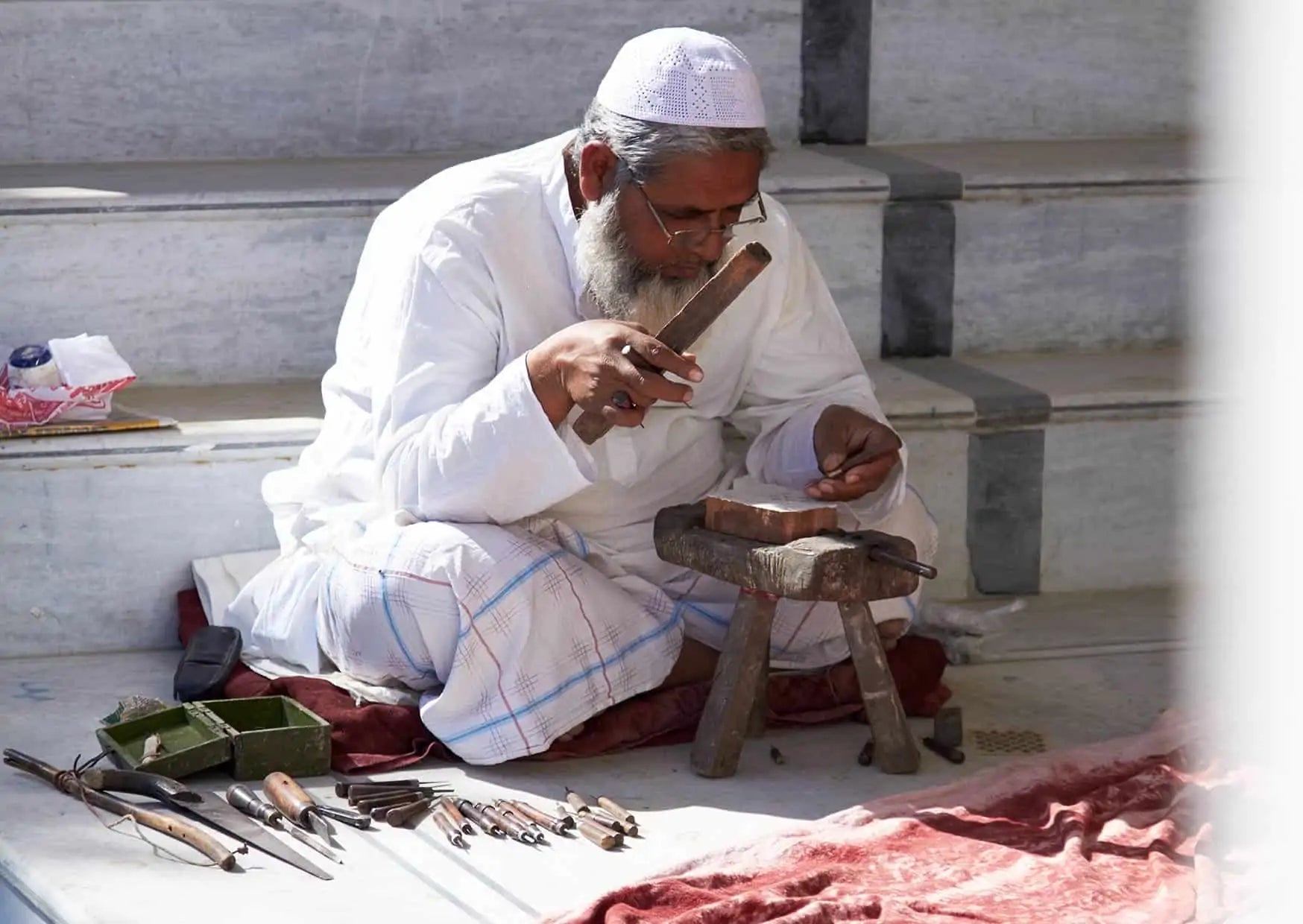
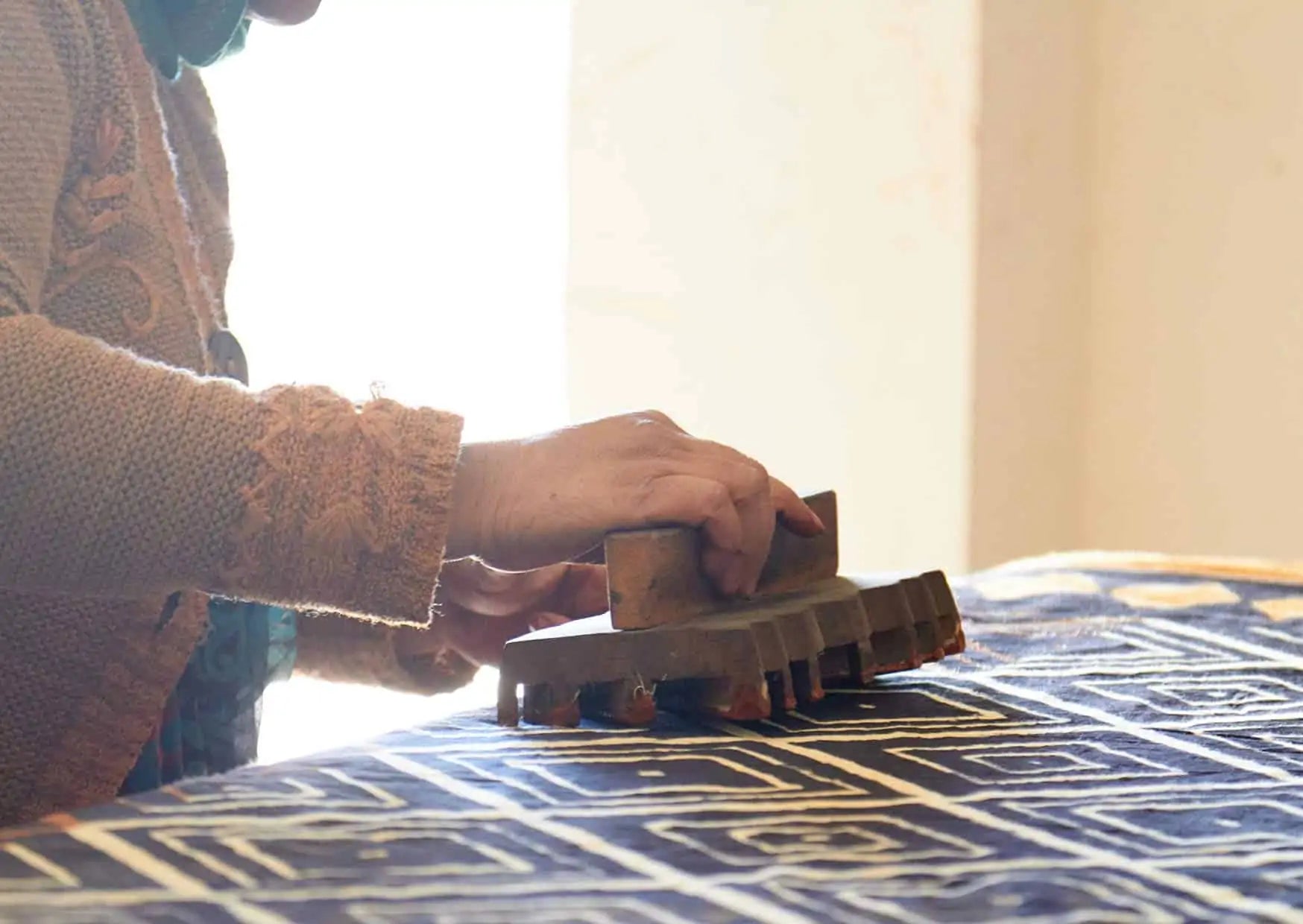

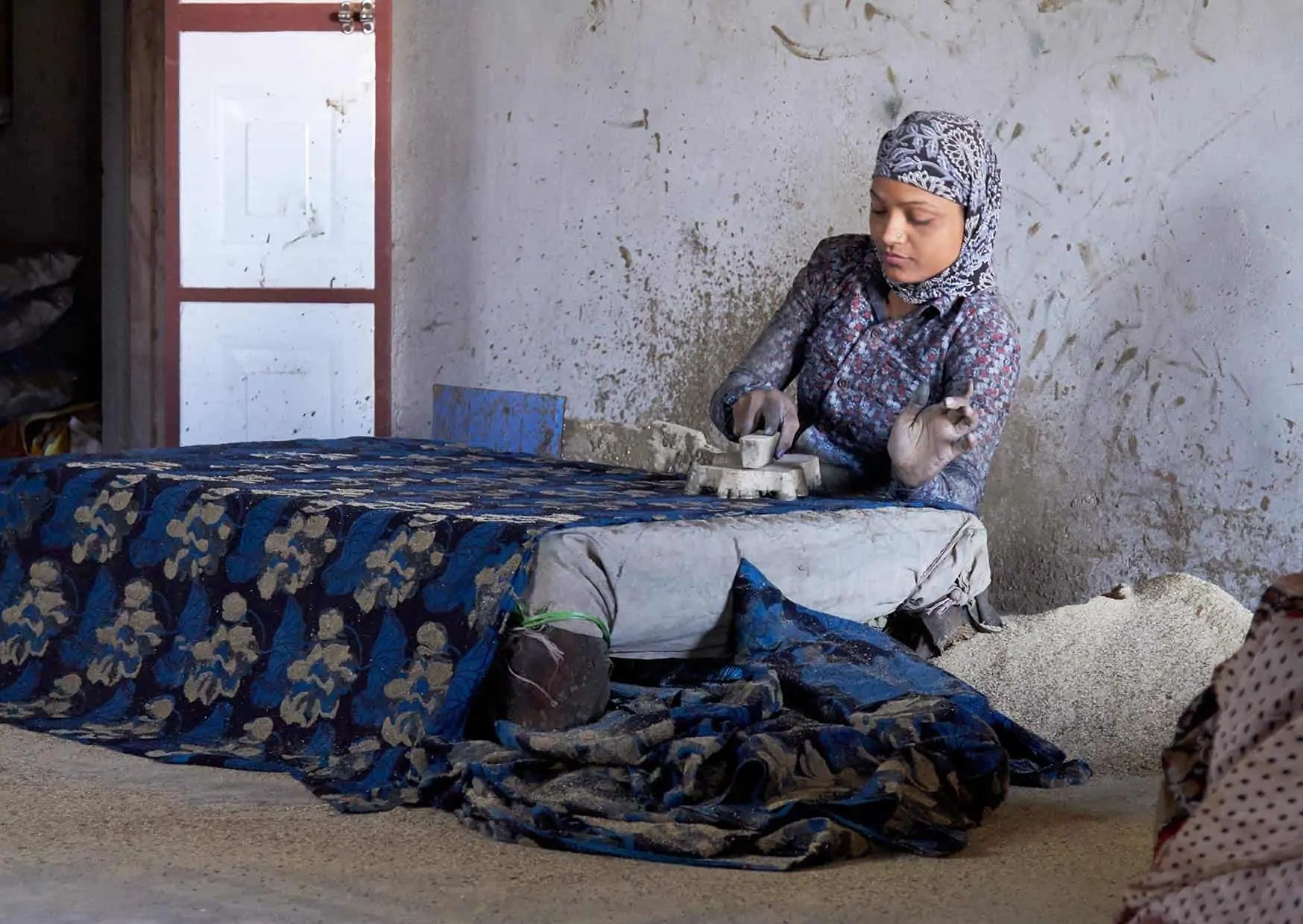
Art with Needle and Thread
Another very popular craft in India is embroidery. Almost every woman has learned it and some of the eleven seamstresses at Jyoti even earned their living from it before they started working for us. With a huge selection of stitches, they are definitely the experts in the field and also create their own designs. The typical embroidery pictures in Chittapur are flower tendrils and similar patterns that are very reminiscent of the Mahindi designs that women adorn themselves with on special days.
The Sada stitch is a bit out of the ordinary, and the women themselves would probably not include it in their collection of embroidery styles because it is so simple. We discovered it while walking through Chittapur. Almost all households use old fabric scraps, especially the women's torn saris, to sew patchwork quilts. Many layers of fabric are placed on top of each other and then stitched together with a simple white cotton thread. This is the Sada stitch that can be found on many of our products and whose arrow-shaped variation gave rise to the Jyoti logo.

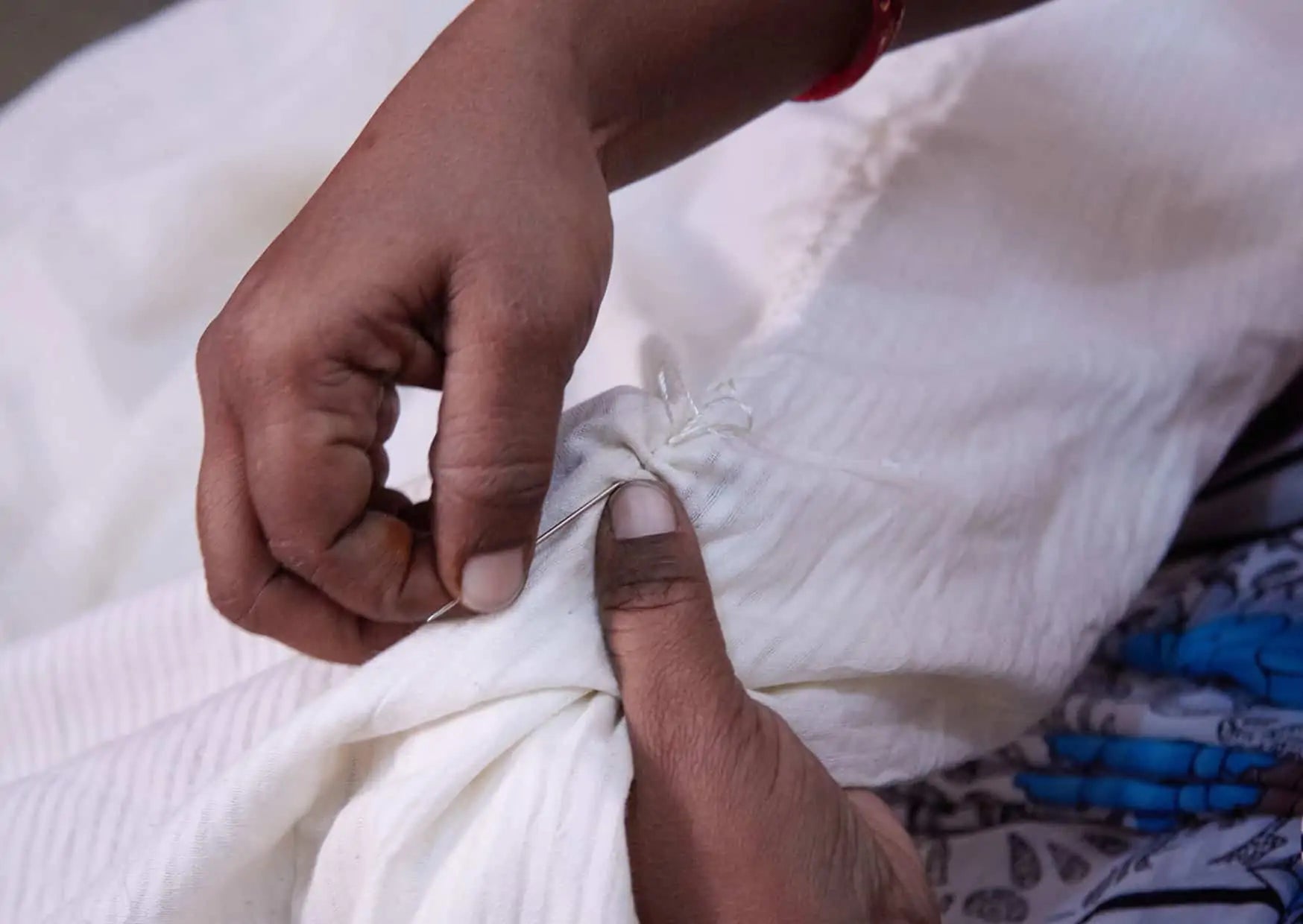
The north of India reveals that India can do much more when it comes to embroidery. In Rajasthan and Gujarat, blankets, dresses and skirts are embroidered with the most delicate patterns, and small mirror pieces are often added in between. In many of the traditional communities, the clothing of unmarried, married and widowed women differs in the type of embroidery, and it is not uncommon for this work to still be the only source of income for many women today. Traditionally, girls from the Rabari community spent their entire lives embroidering their wedding dress with their mothers - until the day they got married and then soon helped their own daughters with the same work.
The Tailoring Shop
Sewing itself is a huge business in India. The markets are overflowing with fabric shops, many families have a sewing machine at home that can be used to repair or alter small household items. In the side streets of the big cities, tailors sit lined up like chickens on a perch, offering their professional services to passers-by. Like us at Jyoti, most of them work with mechanical machines that are powered by feet rather than electricity. This means that you are not affected by sudden power outages and you can also change street corners at any time. What is striking about this is that at home it is the women who sit at the machines. On the streets or in special tailor shops, however, you suddenly only see men handling fabrics and thread...
...Why is that so? Why sewing is labelled as a "women's job" and yet women almost never open their own shops is what the article #unFAQ3 is about: Why is sewing a women's job?!
Conclusion: Quite a lot!
“Made in India” can do more! From weaving the fabrics to printing, embroidery and weaving: each piece in our collection contains knowledge, skill, time and work! The textile craft in India is centuries old and has wonderful discoveries to offer.
If it's up to us, this craft will survive for centuries to come! That's why we work with traditional weaving families and cooperatives, use traditional techniques such as block printing and integrate the hand embroidery that our seamstresses artfully apply. A win-win situation: families who continue the Indian craft can live from their work, and we have wonderful, unique pieces - made in India!



